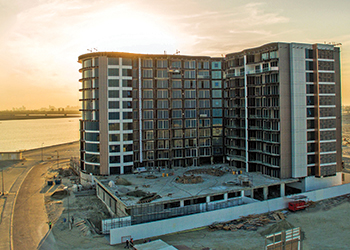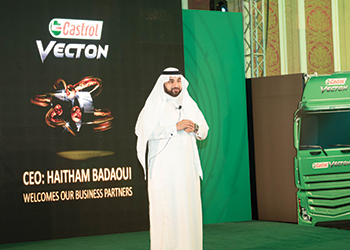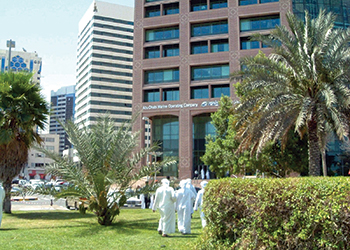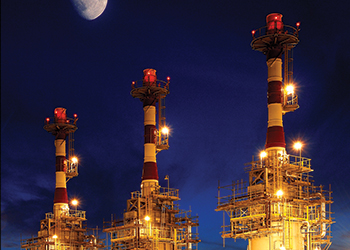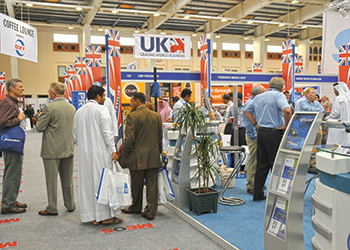
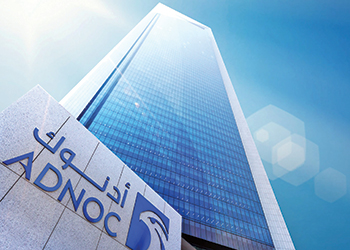 Adnoc ... reorienting its strategy
Adnoc ... reorienting its strategy
Adnoc’s petrochemical production will be increased from an annual 4.5 million tonnes now to over 11 million tonnes by 2025. The efforts are part of a broader goal of stretching the barrel to maximise the value of local oil production
Abu Dhabi plans to more than double petrochemical output by 2025 and possibly build a new oil refinery with financial backing from international investors in key demand centres even as national oil company Adnoc in October announced its new five-year business plan and 2030 strategy aimed at capitalising on consumption trends that are expected to see petrochemical demand, particularly in Asia, double by 2030.
The emirate, which currently has a refining capacity of just over 900,000 barrels per day (bpd), is betting on the downstream to squeeze more value out of each barrel of oil produced and help it drive economic diversification efforts at a time when sustained low crude prices are eroding government revenues and creating fiscal pressures.
Abu Dhabi’s main refinery is the 834,000 bpd complex at Ruwais, whose capacity was doubled last year. The plant is operated by Abu Dhabi Oil Refining Co, also known as Takreer.
'We are ... looking at the possibility of adding a new refinery, to have more processing capability for our crude here locally within the UAE, and we’re looking for investors to bring capital and technology and market,' Abdulaziz Abdulla Al Hajri, refining and petrochemicals director of state-owned Abu Dhabi National Oil Co (Adnoc), says.
'Key countries like Japan, South Korea, India, China – we are targeting investors from those countries to help, to come here, invest with us here. Also we are looking together with our partners such as Borealis.'
Austria’s Borealis, in which Abu Dhabi’s International Petroleum Investment Co is a 64 per cent shareholder, partners Adnoc in the Ruwais-based Bourouge joint venture, which operates the world’s largest integrated polyolefins complex with production capacity of 4.5 million tonnes per year (mtpy).
'This year we have commissioned the base oils unit in the Ruwais refinery,' Al Hajri says. 'This adds value to the bottom of the barrel by upgrading it to lube oil. We are going to also commission next year a carbon black project that will take the bottom oil residue, the heavy residue, and upgrade it to a polymer grade ... for use within Borouge,' he adds.
The carbon black project had been expected to be completed by the end of 2016.
Adnoc’s petrochemical production will be increased from an annual 4.5 million tonnes now 'to over 11 million tonnes by 2025,' says Al Hajri. The efforts are part of a broader goal of 'stretching the barrel' to maximise the value of local oil production.
Although specifics of the downstream plans haven’t been outlined, Abu Dhabi’s petrochemical growth strategy will be supported by the United Arab Emirates’ target of raising oil production capacity to 'a level of 3.5 mbpd by the end of 2018,' Suhail Al Mazrouei, the UAE’s energy minister, says. Current capacity is around 3.1 mbpd.
 |
|
Dr Al Jaber ... creating a new energy landscape |
Al Hajri says Takreer was focused on processing the nation’s offshore, heavier crude and selling the higher value, lighter crude. The goal is to use the heavy crude as feedstock for petrochemical products.
'The shale revolution is bringing gas – that means people are cracking more, lighter ethane gas and producing lighter products. We are going to crack naphtha and naphtha will have the opportunity of bringing heavier products to the market,' he says.
As part of these plans, Adnoc might build 'a fourth cracker in Borouge to crack naphtha and to add more polyolefins ... the products that we believe are of value add to the automotive industry, pipe industry, the wire and cable industry,' Al Hajri says.
Meanwhile, nine months into a comprehensive strategic overhaul of state-owned Adnoc, the company’s priorities are coming into focus. Low prices have helped usher in a younger generation of senior leaders to shake up the culture and structure.
What hasn’t changed is Adnoc’s commitment to its upstream oil expansion, which should hit 3.5 mbpd by 2018 and 3.8 mbpd by 2024. But its latest business plan shows a clear emphasis on gas, petrochemicals and refining – with the ambition of becoming a more integrated energy company.
Adnoc’s 2030 strategy and five-year business plan, approved earlier this month by the Supreme Petroleum Council, the emirate’s highest oil authority, is focused on wrapping up its decade-long oil expansion, which has boosted capacity to 3.1 mbpd so far. But Adnoc also wants to boost sour gas production, which is needed for power plants and petrochemical feedstock.
Abu Dhabi sees petchems production reaching 11.4 million tonnes per year in 2025 from current levels of 4.5 million tonnes per year. 'Abu Dhabi will continue to invest in resources but in a smart way,' Al Mazrouei says. 'We need to optimise the finding cost and production cost of every barrel we produce.'
Adnoc’s ambitions sound a lot like the goals of fellow national oil company, Saudi Aramco, which wants to become the largest integrated energy company in the world. The difference is that Adnoc will start from a lower base, and it needs a lot more help from international oil companies, which are its partners for most major oil, gas and petrochemical schemes in Abu Dhabi.
Adnoc CEO Sultan Al Jaber has already made his mark on the conservatively managed state oil entity since taking over the top job in February, carrying out internal reshuffles at the senior management level, and releasing significant numbers of staff – estimated by some to be as many as 5,000 mostly expatriate workers – to adapt to today’s lower-for-longer oil price environment.
 |
|
Takreer ... expanding the refinery |
The announcement in October to consolidate Adnoc’s two offshore operating companies – Abu Dhabi Marine Operating Co (Adma-Opco) and Zakum Development Co (Zadco), which together produce some 1.3 mbpd-1.4 mbpd of oil – into a single entity represents the most significant change yet.
This, together with the consolidation of three shipping and marine units, will take the number of Adnoc group operating companies to 15 from 18.
Sour gas sits at the heart of Adnoc’s gas plans so it makes sense to move forward, with partner Occidental, on a big gas project, an investment that would come as the US firm is pulling back from other parts of the Mideast. Next in line could be a greenfield development by Wintershall and OMV that is estimated to hold some 3 trillion cubic feet of technically challenging gas. Al-Hosn, a venture between Oxy and Adnoc, is moving forward on the second phase of the Shah sour gas field, which would boost production to 1.5 billion cubic feet per day (bcfd) from 1 bcfd now.
Al-Hosn is a candidate to be merged with Abu Dhabi Gas Industries Ltd., a venture that includes Royal Dutch Shell and Total, industry sources say. Wintershall and OMV spudded a new exploration well on the Shuwaihat field, and plan another well in 2017.
Gas and petrochemical opportunities are great, but IOCs are really focused on how Abu Dhabi’s thinking is evolving on its big offshore and onshore oil concessions. Here there is limited public progress. Of Abu Dhabi’s historic partners, only Total and Exxon have secure positions, leaving Royal Dutch Shell and BP on the outside looking in.
Senior officials from all four companies were in Abu Dhabi in the past weeks discussing their options. The CEOs of BP, Exxon and Total held meetings with Abu Dhabi officials on the sidelines of Adipec, while senior Shell officials visited a few weeks prior. Total retains the dominant position on the Abu Dhabi Co for Onshore Petroleum Operations (Adco), which pumps 1.6 mbpd. Shell and BP, which balked at matching Total’s signing bonus to join Adco, are still holding out the slim hope of a compromise from Abu Dhabi. BP is focused on keeping its position on the 700,000 bpd Adma-Opco concession, which expires in March 2018.
Meanwhile the new strategy will ensure Adnoc’s long-term success in an evolving energy market. It will also further strengthen its role as a major contributor to the United Arab Emirates’ future development and economic diversification objectives, with a clear focus on delivering more valuable and profitable upstream and downstream businesses, while ensuring an economic and sustainable supply of gas, in line with the Abu Dhabi leadership’s directives.
Sheikh Mohamed bin Zayed Al Nahyan, Crown Prince of Abu Dhabi and Deputy Supreme Commander of the UAE Armed Forces and Vice-Chairman of the SPC says Adnoc’s key role in the prosperity of Abu Dhabi would be strengthened by the new strategy and sound five-year business plan, which will enable Adnoc to maximise value by leveraging synergies, implementing efficiencies, and making targeted investments in new growth opportunities.
He adds the strategy and five-year plan will build on the foundations laid in the past eight months, during which Adnoc embarked on a journey to evolve into a more agile and resilient company that is strategic, commercially minded and performance driven. The company’s focus on people, performance, profitability and efficiency, he says, is already delivering tangible results.
The SPC is the highest governing body of the oil and gas industry in Abu Dhabi. The council formulates and oversees the implementation of Abu Dhabi’s petroleum policy and follows up its implementation across all areas of the petroleum industry to ensure that the set goals are accomplished.
Under the 2030 Strategy upstream will remain Adnoc’s most profitable business. The strategy reaffirms Adnoc’s intent to achieve a production target of 3.5 mbpd in 2018, an increase, over today’s production, of 400,000 bpd. There will also be a stronger focus on the application of new and innovative technologies for enhanced oil recovery and tapping into additional sour gas resources.
In line with increased sour gas production, Adnoc’s sulphur output will rapidly increase over the coming decade, making Abu Dhabi one of the world’s largest sulphur producer. As a result, Adnoc plans to maximise the value of its sulphur by working closely with key phosphate markets, while also supporting the development of a local sulphur products industry, including enhancing the existing ammonia and urea industry.










































































